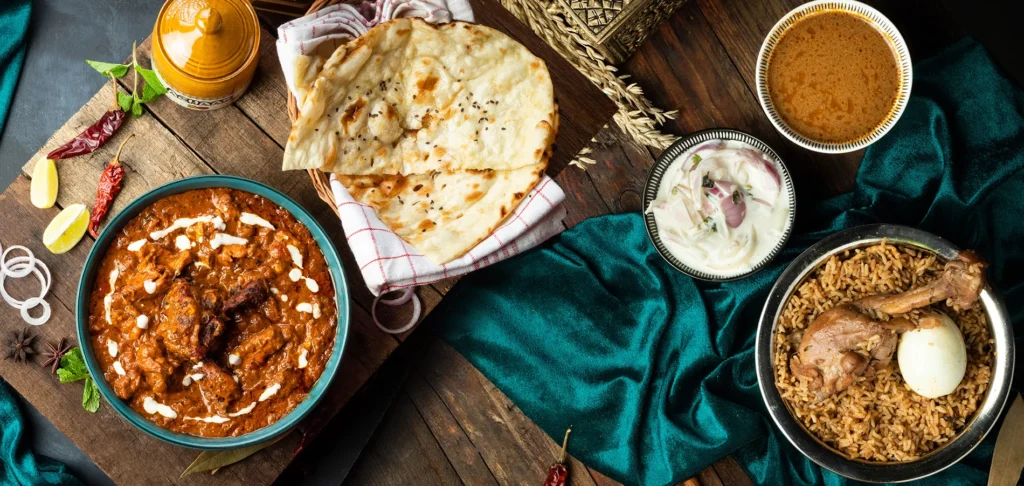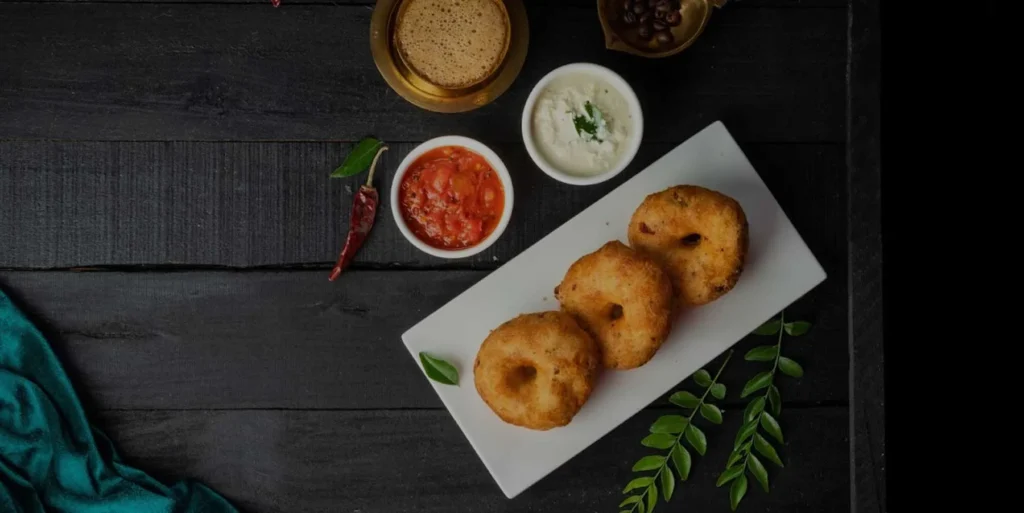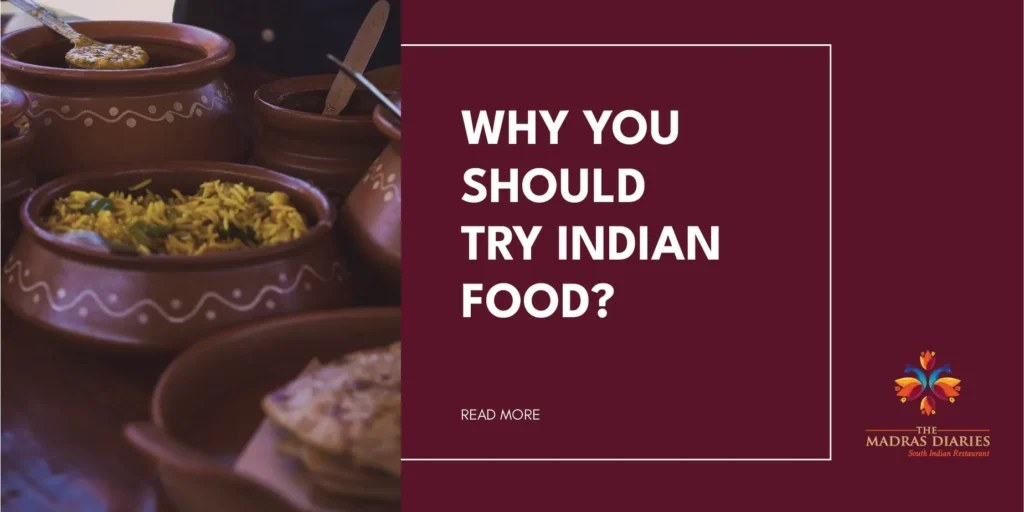Indian food is known worldwide for its unique combinations of flavours. This is mostly because of the spices that Indians use in their cooking. Indian curries, chutneys and bread occupy a special place in every food connoisseur’s mind (and taste buds, might we add). Any true lover of Indian food would tell you there is a considerable difference between north Indian and south Indian dishes, mainly owing to the difference in taste and the spices used. While wheat is a staple in northern India, the south favours rice.
North Indian food finds representation in many restaurants throughout the world. Buttery naans and rotis, with butter chicken curry and accompanied by a tall glass of lassi, is most first-timers’ image of Indian food. However, Indian food goes way beyond the naan-butter chicken combination. There is something for every occasion, every season, every ailment and every palette in Indian food.
Think Indian food; what comes to mind are hot, steaming samosas dipped in mint chutney, aloo tikki, kebabs and biryani. Most of these are a part of the north Indian cuisine. South Indian cuisine is quite different from these. Read on to discover the main differences between north and south Indian food.
1. Wheat vs rice:
Generally, north Indians prefer to use wheat and refined flour, while south Indians opt for rice. Tandoori rotis, naan, rumali rotis and parathas are popular among north Indians for breakfast and dinner, while south Indians prefer rice-based dishes such as dosas, idlis and appams.
Due to the rainfall patterns and the soil found in each of these regions, the food preferences largely depend on the kind of produce each part of India receives. In south India, with plentiful rainfall for almost six months in the year, rice is abundantly available. Many south Indians like to make a batter with rice and pulses or grains to make various dishes. A common breakfast dish is a dosa- a crispy crepe made with a batter of rice and lentils; this is a favourite dish enjoyed with a side of sambar, coconut chutney, mint chutney or even a spicy mixture of ground pulses. There are many varieties of dosa, including
- plain dosa- a slightly sour thin crispy crepe eaten with sambar and chutney
- masala dosa- the crispy dosa filled with spicy potatoes, accompanied by sambar and chutney
- Mysore masala dosa- a delicious savoury crepe that has a thin layer of ground spices along with a filling of spiced potatoes, accompanied by sambar and chutney, or eaten as it is
- Onion dosa- dosa stuffed with freshly cut onions and garnished with cut chillies and coriander leaves
Many other varieties of dosa have become a part of south India’s everyday breakfast. Mothers like to incorporate carrots, beetroots, spinach and even cheese into dosas to make them more interesting for fussy children. The dosa has also found non-vegetarian fillings such as kheema, egg and chicken for those who like to get adventurous with their food.
In addition to dosas, there are many rice-based breads and crepes that you would find in south Indian kitchens. The neer dosa of Karnataka, the pathiri of north Kerala, the appam of Tamil Nadu and Kerala, puttu from Kerala and pesarattu of the Andhra region are mouth-watering breakfast/dinner items that you should try at least once.
On the other hand, Wheat plays an important role in many parts of north India, and many people relish the various Indian breads that this region is famous for. Just as the dosa got a makeover with its various fillings, the naan has many avatars that vie each other for the top spot in the list of most beloved food items. From garlic to kheema, the humble naan gets many different stuffings to make it fluffy, tasty and spicy.
There is also a slightly sweet version of naan known as the Kashmiri naan, which traces its origin to the beautiful valley of Kashmir. Whether you prefer crispy and light or fluffy and oily, there is a type of north Indian bread for everyone. There are crisp tandoori rotis that are perfect for any gravy, soft and light kulcha and rumali roti to entice your taste buds and make you come back for more, flavoured buttery naan that is so famous the world over, and parathas that cater to every craving.
2. Spices
India has long been recognised as the land of spices. Our history has recorded invasions and colonisation for the rich spices that our land has to offer. Would it be a surprise if the various cuisines in India differed based on the spices used in the gravies? While the north, with its harsh winters, uses more mustard and cumin, the south loves to indulge in various spices, with cardamom, cinnamon and clove being the major players in the taste game.
Look up the recipe for any lentil-based gravy that is popular in north India, and chances are that you will see three ingredients listed for the garnish- coriander leaves, asafoetida and cumin. North Indian cooking uses mustard oil and lots of cumin in addition to other spices, owing to the winters that they deal with. It is a common belief in India that the food has to be in sync with the changing seasons, and you would find people using different oils for cooking based on the season. While mustard oil is common in north Indian cooking, the south prefers groundnut, sesame and coconut oils.
Cardamom and pepper are important spices in south Indian cooking, along with nutmeg, clove, and cinnamon. Even the spice mix that is used in curries and gravies is different. While the south Indian lentil-based gravies use dry red chillies, mustard and fenugreek seeds and coriander and curry leave for garnish; the north Indian ones use coriander leaves, cumin and fenugreek seeds and asafoetida for garnish. North Indian gravies also use dried fenugreek leaves, which is not found in most south Indian cooking.
3. Seafood
Given that the south of India is geographically a peninsula, it is evident that seafood is a major component of south Indian food. In the coastal regions, fish is an integral part of the menu when you visit a restaurant for breakfast, lunch or dinner. Deep-fried spicy fish, biryani, roasted shrimp and crab are some of the delicacies South Indian food is famous for. North Indian food is not bereft of fish, but fish is favoured only in some parts, especially towards the east and west of India.
While chicken and mutton are favourites in north Indian non-vegetarian dishes, seafood is incorporated into many dishes and accompaniments in south India. Fish curry is even used as an accompaniment for the dosa, idli, appam and puttu that many south Indians prefer for breakfast.
4. The use of coconut
Coconut is one of the most favoured ingredients in south Indian cooking. Whether in the breakfast items of Kerala, the curries of south India, or even desserts, coconut is prominent in the south Indian kitchen. As a favoured garnish in fried foods like prawn, fish fry and fried chicken, coconut adds an unmatched dash of flavour. It is also one of the most used ingredients in chutneys, be it the eponymous coconut chutney, where it is the star, or even in other chutneys where it is added for taste.
In north India, coconut is not a part of the ingredients in most dishes. While fresh cream, butter and milk are preferred to add thickness to north Indian gravies, groundnuts and coconuts add flavour and thickness to gravies.
5. Snacks
Vadas are some of the most famous snacks from south India, while samosas are famous in north India. However, these are not the only snacks that Indians have. A list of the crunchy, crispy, yummy snacks that Indian kitchens create could take up most of the space on this blog, so we will not even attempt it.
Usually, we like to separate our snacks into savoury or spicy and sweet ones. In south India, especially in Kerala, plantains are one of the ingredients in many sweet snacks. Even the unripe banana is used in making a batter-fried fritter that goes well with spicy chutney. In addition, many rice and lentil-based fried savoury snacks are filling and healthy, not to mention delicious.
In the north of India, many wonderful snacks use lentils, wheat flour, and sugar syrup that make healthy snacking options. Depending on the time of the year, some sweets you could find will cater to your taste buds and keep you warm or cool down.
While there are many differences between the dishes you would find in north and south India, a common thread connects all of these- the burst of flavour. This is because Indian cooking follows ancient recipes incorporating many spices, cashew nuts, lentils and vegetables commonly found in India. If reading about all of these different dishes have you craving some delicious Indian food, head over to The Madras Diaries and indulge your taste buds in some original flavours of India.



